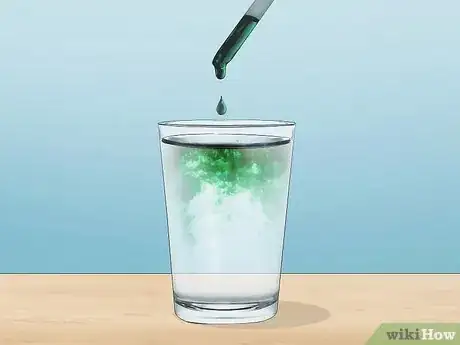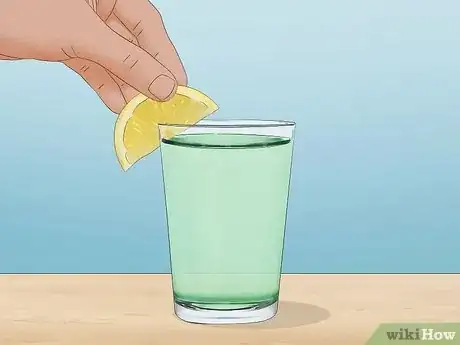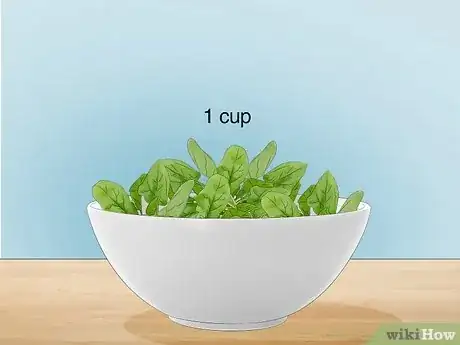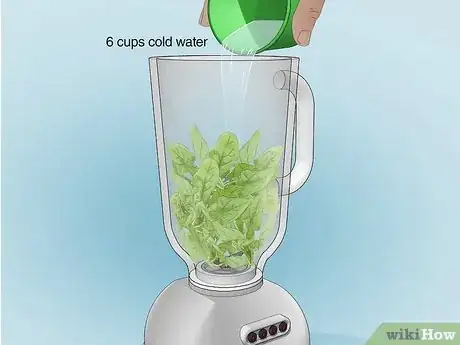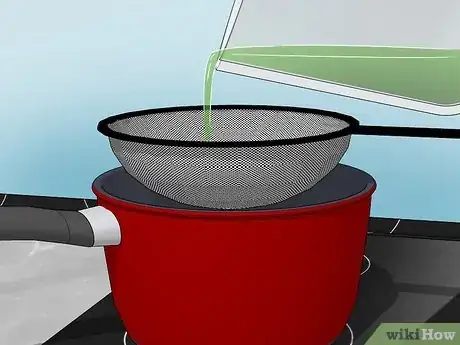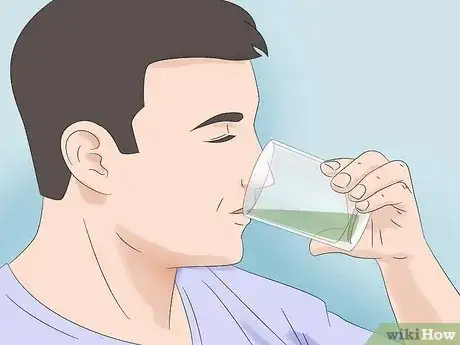This article was co-authored by Marjan Mahallati, RHN, AADP and by wikiHow staff writer, Jessica Gibson. Marjan Mahallati is a Registered Holistic Nutritionist, board certified through the AADP (American Association of Drugless Practitioners) and a graduate of the Canadian School of Natural Nutrition. She is the owner of Let's Nutrition Weight Loss & Nutrition Center in Irvine, California, where she teaches clients how to lose weight and achieve optimal nutrition and health. Marjan has over 15 years of experience in the weight loss industry and has empowered thousands of people to gain their health back and live their healthiest lives.
There are 7 references cited in this article, which can be found at the bottom of the page.
This article has been viewed 3,545 times.
If you follow the latest TikTok crazes, you've probably seen people drinking emerald-green chlorophyll water. Chlorophyll is the green pigment found in plants and it's believed that drinking concentrated chlorophyll is a good source of antioxidants. In this article, we'll show you how to make your own chlorophyll water, and discuss the myths and health benefits of this beautiful green drink.
Steps
How to Make Chlorophyll Water from Fresh Veggies
-
1Gather at least 1 cup (60 g) of leafy greens that are high in chlorophyll. Although a lot of vegetables contain green pigment, you need produce that's high in chlorophyll, so it's easier to extract. Here are some great greens that have a lot of chlorophyll:[3]
- Parsley (1 cup/60 g = 38 mg of chlorophyll)
- Fresh spinach (1 cup/30 g = 23.7 mg of chlorophyll)
- Garden cress (1 cup/50 g = 15.6 mg of chlorophyll)
-
2Blend the leafy greens with 6 cups (1.4 L) of cold water. Put your parsley leaves, spinach, or cress into a blender and pour in the water. Pop the lid on the blender and blend it on high for a few minutes to completely liquefy the produce.[4]
- If you're using a high-speed blender, you can probably blend the mixture in under a minute.
-
3Pour the liquid through a fine-mesh strainer into a saucepan. If you don't have a fine-mesh strainer, line a colander with a thin kitchen towel and set that in the saucepan. Pour the blended mixture into the strainer or towel-lined colander and give it a few minutes for the liquid to drip into the saucepan.[5]
- Discard the plant matter or put it into compost.
-
4Heat the strained liquid on low heat until it simmers. Stir it occasionally and heat the green liquid until it bubbles—you'll see the chlorophyll pigment separate from the liquid. Then, turn off the heat.[6]
-
5Chill the chlorophyll water and drink it within a week. Pour the chlorophyll water into a container and add a handful of ice. Put in the fridge until it's cold—at this point, you can drink the chlorophyll water or strain it again for a thinner, less-concentrated drink. If you strain it, you'll get a paste-like chlorophyll extract.[7]
- If you choose to strain the chlorophyll water through cheesecloth, use the thick chlorophyll extract that you're left with into pasta dough or sauces. This adds a beautiful green color without affecting the flavor of the dish.
Warnings
- You might experience side effects like mild stomachache and green poop. Taking chlorophyll also increases your risk for sunburn, so don't forget to apply sunscreen.[11]⧼thumbs_response⧽
References
- ↑ https://youtu.be/98bndZbC3ys?t=205
- ↑ https://health.clevelandclinic.org/are-there-health-benefits-to-using-liquid-chlorophyll/
- ↑ https://lpi.oregonstate.edu/mic/dietary-factors/phytochemicals/chlorophyll-metallo-chlorophyll-derivatives
- ↑ https://www.cookalmostanything.com/2007/05/making-chlorophyll.html
- ↑ https://www.cookalmostanything.com/2007/05/making-chlorophyll.html
- ↑ https://www.cookalmostanything.com/2007/05/making-chlorophyll.html
- ↑ https://www.cookalmostanything.com/2007/05/making-chlorophyll.html
- ↑ https://www.ncbi.nlm.nih.gov/pmc/articles/PMC4830245/
- ↑ https://health.clevelandclinic.org/are-there-health-benefits-to-using-liquid-chlorophyll/
